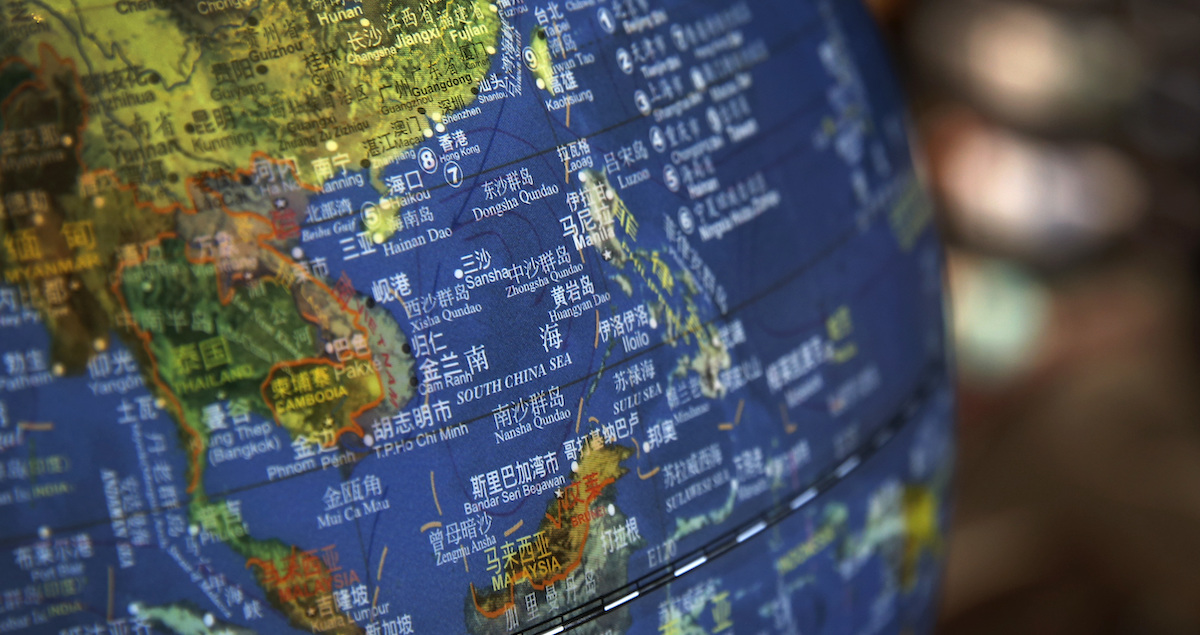Loading player
This week Vietnam banned the screening of the new film “Barbie” throughout the country because in one scene a rather stylized map appears in which there is the “nine line”, i.e. the cartographic representation of China’s claims in the South China Sea. The nine-dash line is so called because it is precisely made up of nine dashes drawn on Chinese maps that delimit China’s claims on practically the entire South China Sea, although other countries also overlook that sea, such as Indonesia, Malaysia, Vietnam, Philippines and Brunei.
The nine-dash line in a map presented by China to the UN in 2009 (Wikimedia)
For decades, the nine-section line has caused enormous disputes – political, legal and economic – between China and all the other countries bordering the South China Sea. These disputes often end up involving cultural phenomena as well, such as the film “Barbie”. This puts producers in difficulty: Vietnam and other countries in the region tend to censor and criticize films that show the nine-dash line, while China censors and criticizes films that non they show it.
The nine-stroke line is one of China’s major territorial claims outside its borders. In 2016 it was declared illegal by a UN-backed tribunal in The Hague, which found that the line violated the UN Convention on the Law of the Sea. However, China has rejected the court ruling, and has kept its territorial claims and the actions with which it has supported them for years (patrols, threats against fishermen from other countries, political claims) unchanged.
To understand why the nine-section line is controversial, just look at a map showing it: the nine-section line claims practically the entire South China Sea for China, and passes very close to the coasts of all the other countries bordering it . This is a rather blatant violation of the law of the sea, according to which each country is entitled to 12 nautical miles of “territorial sea” coastline, where it has full sovereignty, and also has some exclusive exploitation rights (for fishing and of raw materials, for example) on the 200 nautical miles from its coast. China’s claims, however, extend over 700 nautical miles from its shores.
– Read also: Land or sea?
It is not even clear how these claims work. China has always kept itself deliberately vague about its exact claims to the South China Sea, so that it can alter them as the occasion dictates. Therefore, it is not known whether China considers the South China Sea as its own “territorial sea”, or if instead it claims only fishing rights (one eighth of the fish caught in the world is caught in the South China Sea) or the extraction of materials raw materials (of which the area could be quite rich). This intentional vagueness of China allows it to modulate requests and claims according to the interlocutor and the context.
To support its claims, China has been building artificial islands in the South China Sea for over a decade, on which it has established airstrips and some military installations. It carries out patrols with its coastguard along the nine tract line, and carries out operations to intimidate fishing boats from other countries entering the area it deems its own (although from the point of view of international law, fishermen would very often have everything the right to stay there).
The nine-stroke line was drawn for the first time at the beginning of the twentieth century by some Chinese nationalist cartographers who decided that the China Sea should extend as far as James Shoal, a particular seabed formation, which corresponds more or less to the area still claimed. However, the first official map showing the nine-stroke line was published in 1946, when China was still governed by the nationalist Kuomintang party.
In 1949, after a civil war, China began to be governed by the Communist Party which maintained the claims to the South China Sea already advanced by the Kuomintang and also began to build a national mythology around these claims. The Communist Party – especially since the 1990s, when China reduced its international isolationism – began to argue that China had ancestral “historic rights” over the entire South China Sea, and that they had greater legal value than the UN treaties . There are disputes over these rights both among historians (Western ones argue that before the twentieth century China had no major strategic interests in the South China Sea) and among jurists (who tend to consider China’s claims invalid).
As is the case with other territorial claims of China (for example the one over Taiwan) today the Communist Party is extremely rigid on the nine-point line, and always acts rather harshly in all cases in which its claims are questioned: both in events political as well as in cultural phenomena, such as films and books. It also tries to normalize and spread its claims: for example, since a large part of the globes sold in the world are produced in China, it often happens that the globes used in Western schools or in other countries show the nine-dash line.
